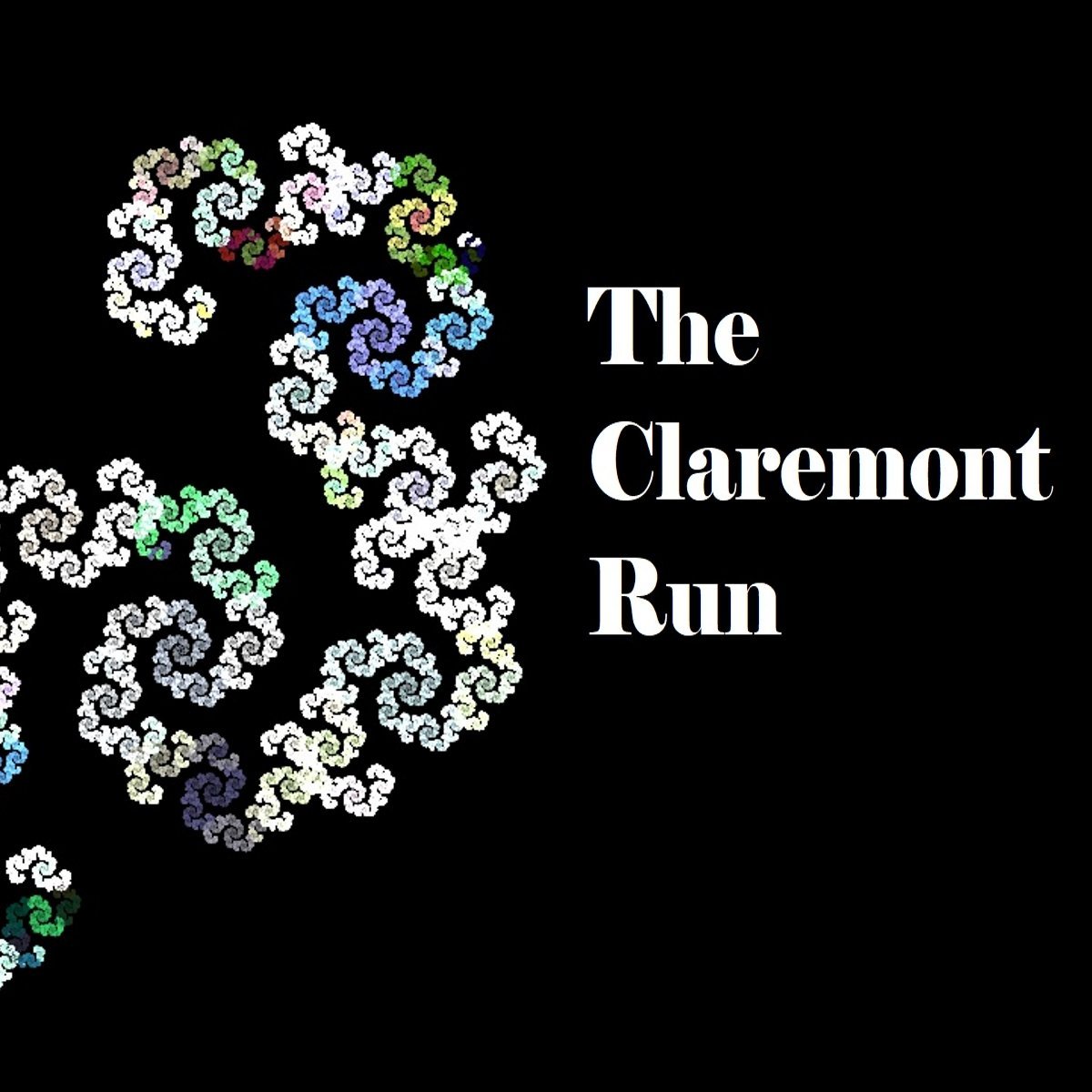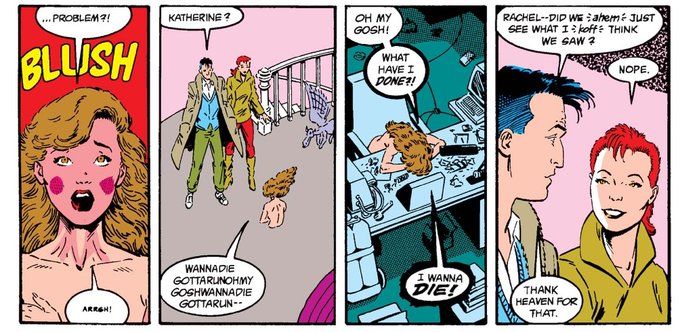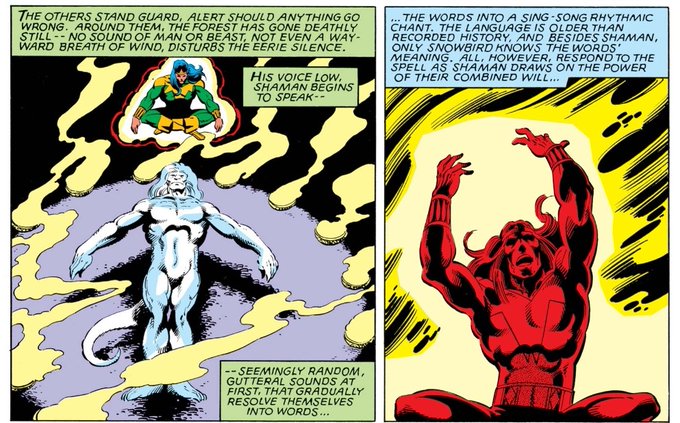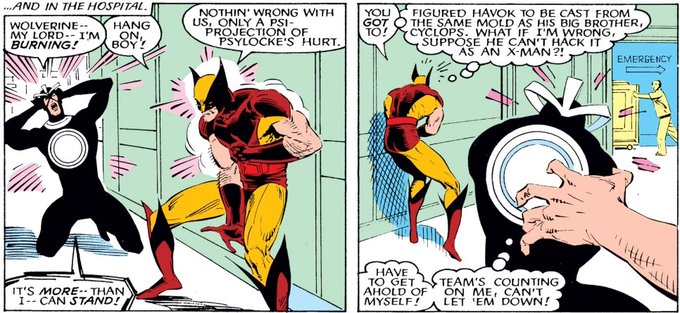We can see such representations in a few key instances throughout Claremont’s runs on different series, such as when Captain Britain’s track suit is shredded by a car crash in the pages of “Excalibur,” or when Sam goes into battle with only a towel on in “New Mutants.” 4/7
Erotic humiliation is considered a subset of masochism (which is the m in BDSM). According to famed social psychologist Roy Baumeister “masochism involves the desire for an enjoyment of sexual experiences involving pain, loss of control, and humiliation.” 2/7
Where theories on comics eroticism tend to read characters as the subjects of an objectifying gaze, it is also possible to locate the erotic instead within character identification in the context of exhibitionist erotic humiliation, as Claremont’s work may demonstrate. #xmen 1/7
It is also interesting how similar Kulan Gath’s bubble is to the Hex seen in WandaVision (*SPOILER*), both of which feature a magically-created area with clear boundaries that transforms inhabitants (mind and body) to sustain the magician’s temporal fantasy. 8/8 #WandaVision
Claremont steers away from this a bit by using Storm as his vantage point character (with all the agency she possesses), rather than a hypermasculine figure such as Conan, but the visual trappings of the S&S sexual fantasy are still very much in play throughout the issues. 7/8
Claremont’s text-heavy pages are the stuff of comics legend, which makes the contribution of letterer Tom Orzechowski that much more pivotal to the success of the franchise and series. #xmen 1/6
Whether the symbols were intentional, intuitive, or completely accidental is difficult to say, but their alignment creates a nuanced, multifaceted expression of the inner turmoil and personal growth of Logan as a character at a time when he was rising to prominence. 11/11
In most all versions of the myth, cannibalism is the catalyst that triggers the transformation, thus introducing symbols of social boundaries transgressed in the interest of primal hunger and the subsequent nemesis that enforces a taboo. 4/11
Havok is a prisoner to his brother’s shadow. The tragedy isn’t that he can’t live up – the tragedy is that he’s expected to do so, a tragedy made more potent by the life of happiness and fulfillment that he loses. He stepped out of that shadow, but it wouldn’t let go. 7/7
Throughout the issues that follow, Havok is constantly measured by the standard of his brother, and constantly found wanting. The dynamic is compelling and novel, however, in that Havok doesn’t want to be like his brother and has no desire to superhero. 5/7











